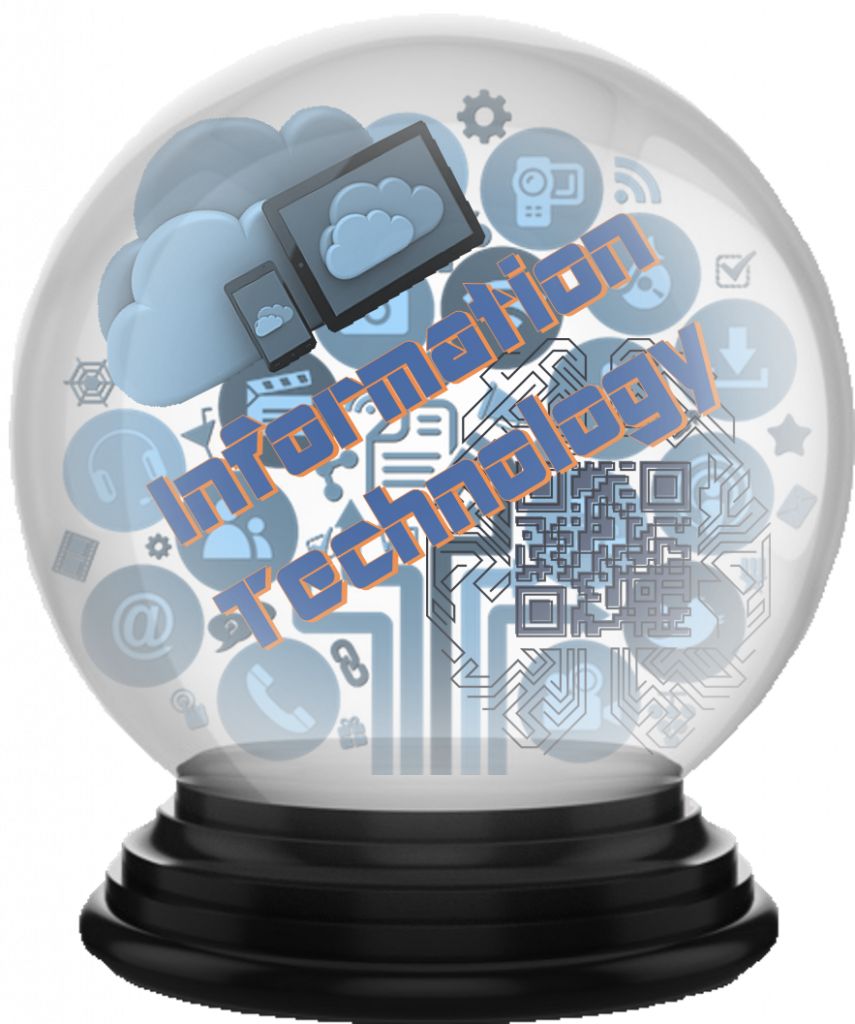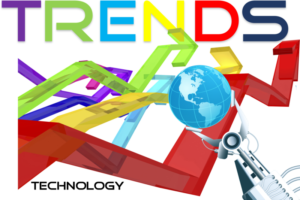Information technology (IT) is a big tent covering a lot of technologies. The importance of IT for today’s organizations cannot be understated. We live in the Digital Age — an age in which humongous amounts of data are generated, stored, and analyzed. IT helps organizations stay afloat in this sea of data and propels them into a better-informed future. Most analysts agree organizations founded on and using Industrial Age principles need to transform into digital enterprises (sometimes called real-time enterprises) in order to survive and thrive in the Digital Age. The editors of CDO Trends suggest organizations need to pay close attention to IT trends because those trends “will shape how companies will transform into real-time enterprises.”[1]
Important information technology trends
An article in The Enterprisers Project asserts, “The race to reinvent is on, and CIOs are running out of time to either jump into the race with both feet or get left behind. True IT reinvention and reinvigoration must pervade an entire organization, from infrastructure rationalization and modernization to enterprise-wide agile practices, digital platforms, empowered IT product teams, and beyond. It’s a daunting challenge, but much more attractive than business and professional failure.”[2] The IT trends discussed below deserve careful scrutiny as organizations transform themselves into digital enterprises.
Artificial intelligence (AI). AI, an area which includes things like machine learning and cognitive computing, is one of the hottest topics in business circles. “IDC forecasts AI solutions will permeate enterprise applications and deliver over $52B in global market revenue by 2021, attaining a compound annual growth rate (CAGR) to 46.2% through 2021.”[3] A World Economic Forum (WEF) report entitled “The Future of Jobs” concludes, “Four specific technological advances — ubiquitous high-speed mobile internet; artificial intelligence; widespread adoption of big data analytics; and cloud technology — are set to dominate the 2018–2022 period as drivers positively affecting business growth.”[4]
Fifth generation (5G) telecommunications. Connectivity is one of the most important capabilities any organization can possess. Adie Tomer (@AdieTomer), a fellow at the Brookings Institution, and Rob Puentes (@rpuentes), President & CEO of EnoTrans, assert, “No industry or household in the world, will reach their future potential without access to broadband, it is the electricity of the 21st century.”[5] In future years, the two most important ways for organizations to connect will be fiber optic cable and 5G telecommunications. Kalyan Parbat explains, “5G or ‘fifth-generation’ is a fast, wireless broadband technology that will transcend smartphones and connect anything from cars, machines and home appliances at speeds 50-to-100 times faster than present 4G networks. It will offer lower lag times when transferring data.”[6]
Internet of Things (IoT). The reason connectivity is gaining in importance is because so many new “things” are being connected. The term “Internet of Things” was coined to describe this new connectivity ecosystem. The ecosystem begins with embedded sensors that generate data from monitored devices. That data is transmitted via the IoT to analytics platforms. Analytics platforms, often cognitive computing systems, generate actionable insights or initiate pre-defined responses. The IoT will be the nervous system of the digital enterprise. IDC analysts predict, “Through 2022, 75 percent of successful digital strategies will be built by a transformed IT organization, with modernized and rationalized infrastructure, applications, and data architectures.”
Automation and robotics. Both hardware (robots) and software (bots) technologies are changing the business landscape. The WEF report concludes, “A broader range of recent robotics technologies at or near commercialization — including stationary robots, non-humanoid land robots and fully automated aerial drones, in addition to machine learning algorithms and artificial intelligence — are attracting significant business interest in adoption. Companies across all sectors are most likely to adopt the use of stationary robots, in contrast to humanoid, aerial or underwater robots.” In office settings, software bots are more likely to be utilized. CDO Trends editors predict, “Robotic process automation (RPA) and machine learning will transform how business operates. It will also dictate what skills a business workforce needs.”
Cloud and hybrid cloud computing. For a lot of good reasons, including cost and efficiency, businesses turned to cloud computing (i.e., the practice of using a network of remote servers hosted on the Internet to store, manage, and process data, rather than a local server or a personal computer). As the amount of data being generated increased, some businesses adjusted their cloud strategies. Today, it is common for organizations to use a hybrid cloud strategy (i.e., “a cloud computing environment that uses a mix of on-premises, private cloud and third-party, public cloud services with orchestration between the two platforms”).[7] IDC predicts, “By 2022, the top four cloud ‘mega platforms’ will host 80% of IaaS/PaaS deployments, by 2024, 90% of Global 1000 organizations will mitigate lock-in through multi- and hybrid cloud technologies and tools.”
Edge computing. With the advent of the IoT, organizations realized so much data was being generated that, in some circumstances, it no longer makes sense to transmit all the data to the cloud for analysis. As a result, the concept of edge computing is garnering a lot of interest. Wikipedia notes, “Edge computing is a distributed computing paradigm in which computation is largely or completely performed on distributed device nodes known as smart devices or edge devices as opposed to primarily taking place in a centralized cloud environment.” Business leaders must now ask themselves, “Where does it make the best business sense to collect, store, and analyze data?” The answer will often be found in hybrid cloud and edge computing.
Concluding thoughts
The editors at CDO Trends conclude, “In 2019, digital leaders will look to reinvent their operations to take advantage of disruptive technologies like 5G, artificial intelligence (AI)/machine learning, automation and robotics, augmented and virtual reality and the next-gen cloud including edge computing. The prize for those who can best leverage the advantages: future leadership.” IDC analysts suggest CIOs can win the race to reinvention if they implement the following guidelines:
- Create synergies between the stakeholders to get past seeming contradictions; orchestrate change across the enterprise.
- Don’t just automate; rethink operations and processes in the context of data and AI-based optimization and potential changes in enterprise service needs.
- Recognize that [line of business] organizations are key players in cyberattack risk and response and need to be an integral part of resilience building.
- Adopt goal-driven adaptive IT governance models to empower teams by granting authority to shape products and services to meet enterprise and customer needs.
- Create and publicize a brand and profile for the IT organization that emphasizes cutting-edge technologies and practices to attract talent.
IT is one area in which predicting constant change is a no-brainer. Although change can be unsettling, forward-thinking leaders will embrace IT changes if they want their organizations to remain relevant.
Footnotes,”1] Editors, “Seven that Matter: 2019 IT Transformation Trends,” CDO Trends, 17 December 2018.
[2] Anonymous, “10 IT predictions for the next 5 years: IDC,” The Enterprisers Project, 23 November 2018.
[3] Louis Columbus, “IDC Top 10 Predictions For Worldwide IT, 2019,” Forbes, 4 November 2018.
[4] David Weldon, “12 trends impacting the future of data management jobs,” Information Management, 9 October 2018.
[5] Adie Tomer and Rob Puentes, “Here’s the Right Way to Build the Futuristic Cities of Our Dreams,” Wired, 23 April 2014.
[6] Kalyan Parbat, “How 5G technology can play crucial role in agricultural growth and smart cities initiative,” Gadgets Now, 7 April 2018.
[7] Margaret Rouse, “Hybrid cloud,” TechTarget




